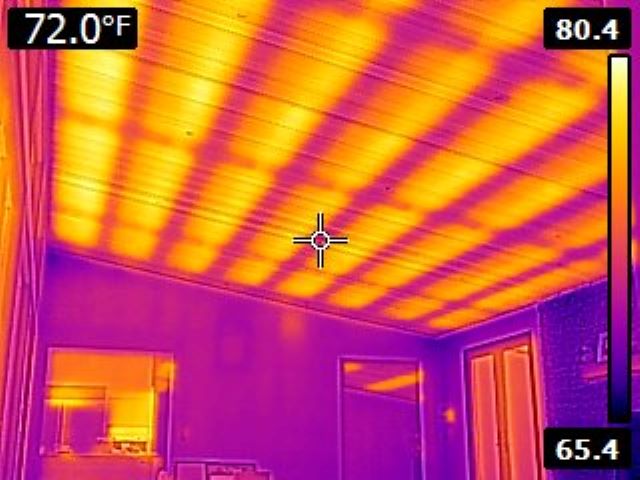
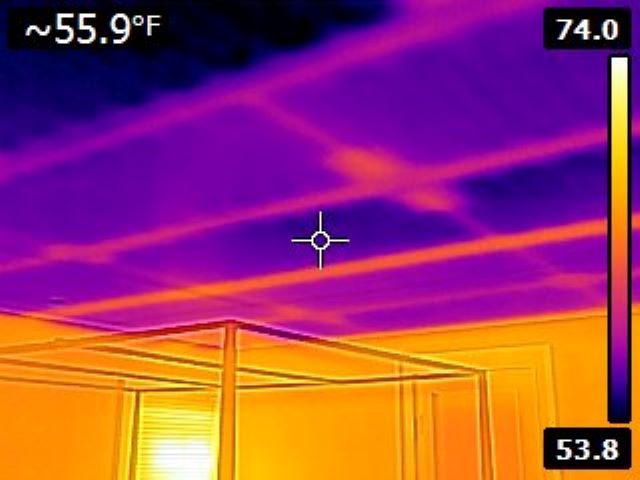
What is a radiant ceiling?
A ceiling is the most ideal surface for radiant systems due to its unobstructed, invisible, and highly efficient heating and cooling capabilities.
A radiant ceiling provides heating and cooling from within the ceiling of a structure.
Historically, radiant ceiling systems have provided only electric or hydronic heating. An electric radiant ceiling is a heating system that consists of electric heating elements concealed behind or within ceiling materials. Electric radiant systems are regarded as less efficient than their hydronic counterparts. Instead of using an electric heating element, hydronic systems use water to transfer thermal energy for both heating and cooling.
Although electric radiant ceiling systems became common during the 1970s, their popularity declined over the next 30 years they failed over time. During this time, hydronic systems became more common and solidified their reputation as a more flexible and robust alternative to an electric radiant ceiling.
The Messana Ray Magic® hydronic radiant ceiling system consists of a network of panels that are embedded in the ceiling and connected to a hydronic heating and cooling energy source (heat pump, boiler, chiller, etc.).
Ray Magic® panels provide both radiant cooling and heating, making them an efficient and versatile option for any building.
Remember: Heat Does Not Rise!
To understand how radiant ceiling heating and cooling works, we first need to debunk the #1 myth regarding thermal energy (heat).
MYTH: Heat rises.
FACT: Hot AIR rises. Heat can go down, just stand under the sun and feel it.
This truth is, hot air rises and cold air sinks. Unfortunately, the bad habit of generalizing has resulted in the narrative that "heat rises," when in fact, the hot fluid is what rises during convection, whether that fluid be air or liquid.
So, how does a radiant ceiling work?
The radiant ceiling system works by using water as a heat transfer medium. Water-based systems heat or cool by pumping hot or cold water through a network of panels installed in the ceiling.
Heat always moves from hot objects to cooler objects. So…
In heating, the heat from the water radiates to cooler surfaces, warming the objects and people in the room. The water cools as heat is transferred and is sent back to the energy source to be reheated and repumped through the panels.
In cooling, the heat moves from the warmer objects in the room to the chilled panels, leaving the environment cooler. The radiant panels absorb the thermal energy from the room, the water gets slightly warmer, and then returns to the energy source to be rechilled and repumped through the panels.
So, a radiant ceiling is always facilitating a thermal energy transfer with the environment to leave it cooler or warmer. In contrast, forced air systems only heat or cool air which is then dumped into the environment. This often creates hot or cold spots within the space.
What Are The Three Ways Heat Can Be Transferred?
Heat can be transferred in three different ways. Let's think about boiling a pot of water to understand the following heat transfer methods:
- Conduction: Refers to the transfer of heat through direct contact between objects.
Example: When boiling a pot of water, conduction would refer to the heat transferred when you touch the hot pot handle (direct contact with an object of a different temperature). - Convection: Refers to the movement of heat through air (or liquid).
Example: When boiling a pot of water, convection refers to the heat that is transferred as the water in the pot is heated, rises to the top of the pot, and is replaced by slightly cooler water, creating a convection cycle (transfer of heat through a fluid, caused by molecular motion). - Radiation: Radiation, or more specifically, thermal radiation—refers to the transmission of heat via electromagnetic waves
Example: When boiling a pot of water, radiation would refer to the heat transferred (radiated) without making direct contact with the stove/pot (heat that is transferred in the form of electromagnetic waves).
Diving Deeper Into Radiant Heating And Cooling:
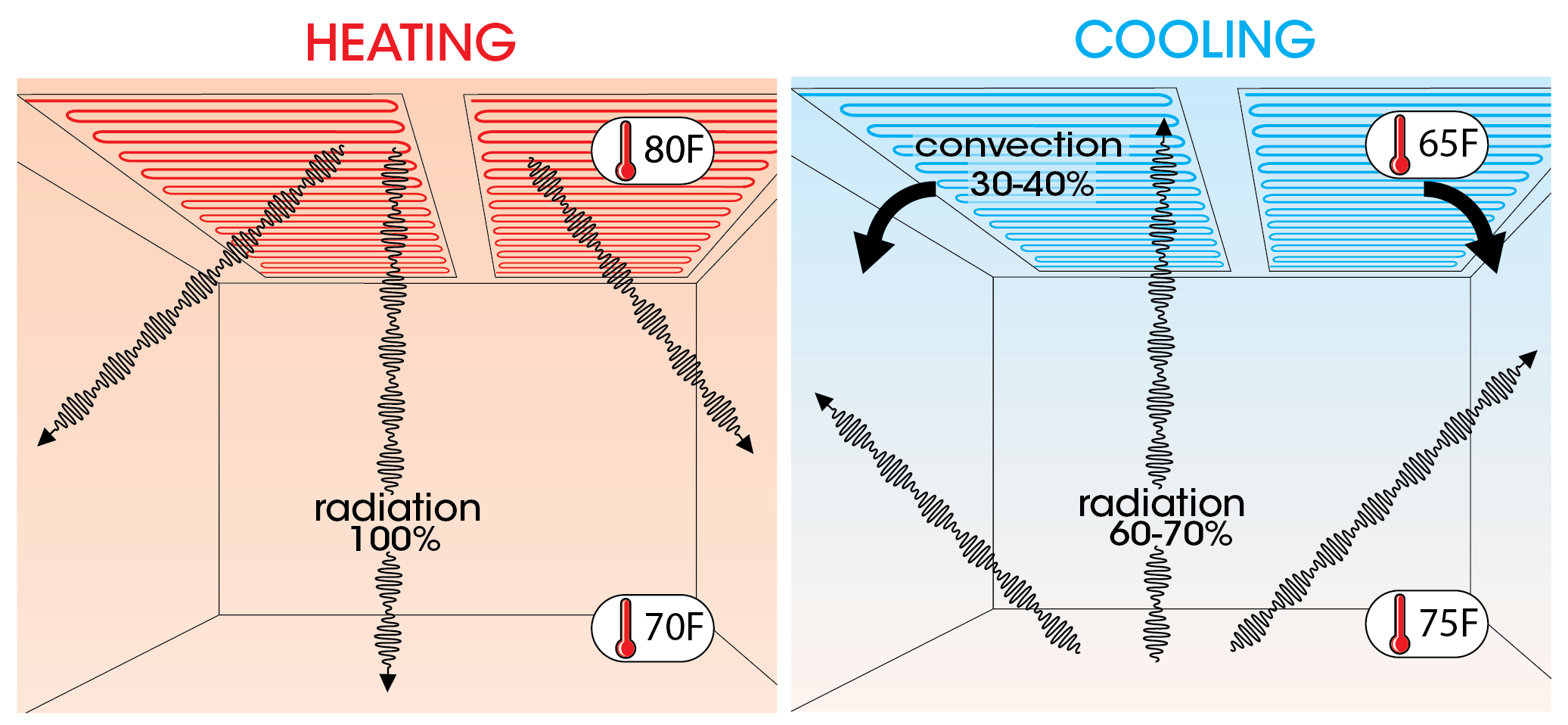
How Does Radiant Ceiling Heating Work?
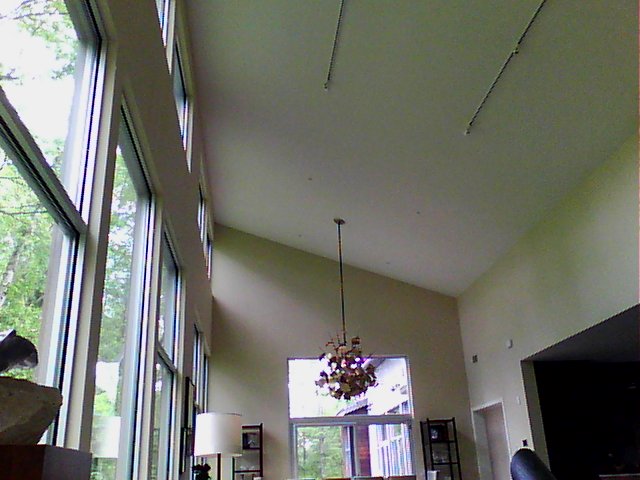
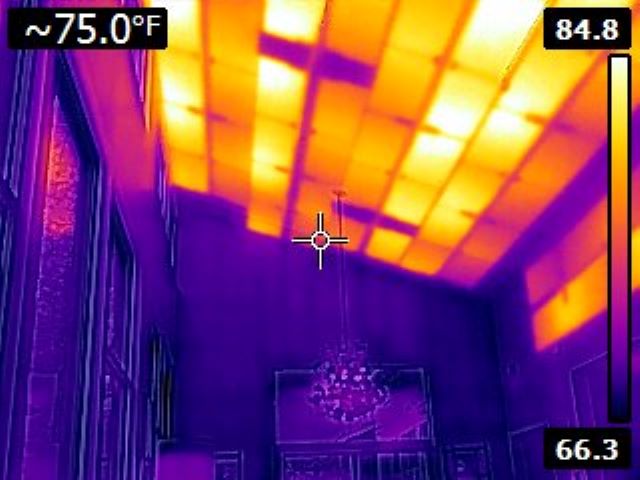
In heating the thermal emission of the radiant ceiling is almost exclusively of the radiation type since the air that is in contact with the ceiling is trapped without a way of rising.
With that said, radiant heating is not as limited in its maximum output as radiant cooling. The dew point temperature, which is dependent on humidity, limits radiant cooling output. For this reason, a convection cycle is not necessary for heating. Thermal radiation will meet heating loads without assistance from a convection cycle.
How Does Radiant Ceiling Cooling Work?
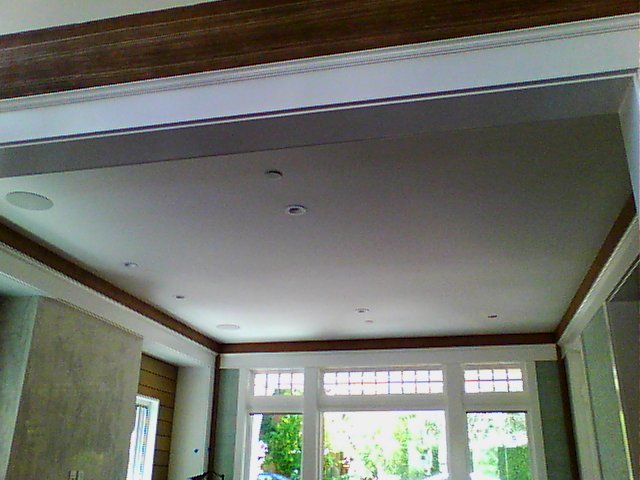
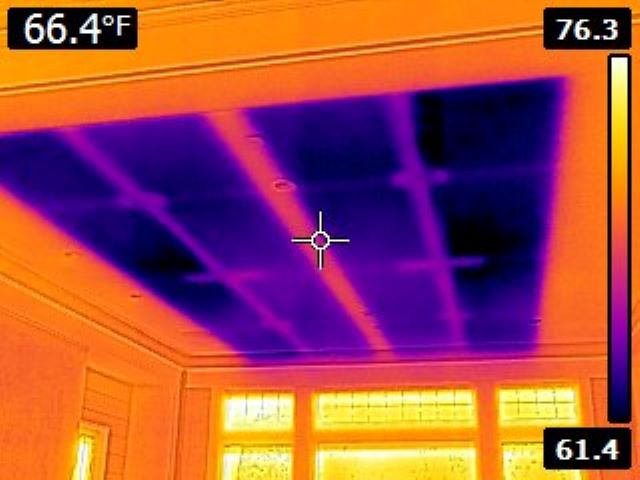
In cooling the radiant ceiling panels are cooled down, and rather than emit infrared radiation, they absorb the thermal output of surrounding objects, bodies, and surfaces which technically become the “radiators.” Due to the fact that hot air rises, a chilled ceiling creates a natural convection cycle. Warm air contacts the ceiling, is cooled, sinks, and is then replaced with warmer air. The cycle then continues.
Typically radiant ceilings in cooling absorb heat 60-70% through radiation and the remaining (30-40%) through natural convection. The combination of these two effects significantly increases system performance compared to radiant floor.
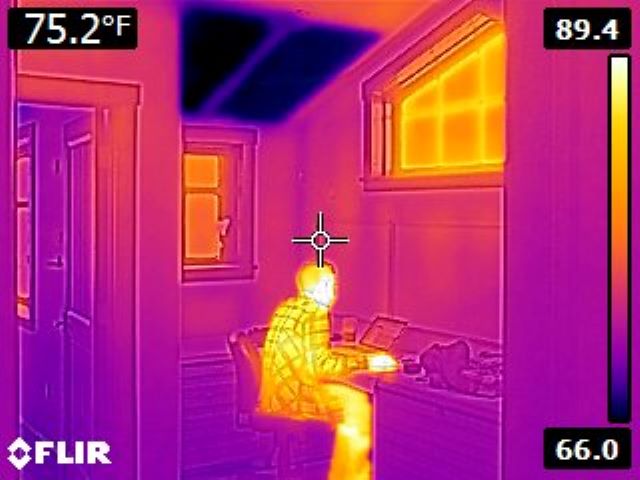
And our body?
With a surface temperature of about 86-96F, our bodies are almost always warmer than the surrounding surfaces.
In the winter our bodies emit less heat, retaining it for metabolic heat to provide a feeling of warmth.
In summer it will emit more heat to foster a feeling of coolness (obviously this mechanism plays an important role in clothing decisions based on seasons).
Why Is A Radiant Ceiling Better Than A Radiant Floor?
Given its immense popularity, increasing success, and satisfied customers, criticizing radiant floor heating technology can be a challenging task. When implemented effectively and under suitable conditions, radiant floors stand out as one of the most comfortable and efficient methods of heating.
Initially, radiant floor systems were easier to install than a radiant ceiling system, since as past ceiling systems required a complex installation process. Now that radiant ceiling panel options are available, installation within the ceiling has become far simpler. Another key contributor to the success of radiant floors is the myth that heat rises. This myth fosters the assumption that radiant ceiling heating would not work. But as mentioned above, heat does not rise, hot air does, so it is still possible to heat downward from the ceiling.
So, now that we have simplified installations and combated the myths regarding radiant ceilings, here are several benefits a radiant ceiling has over a typical radiant floor:
Low Thermal Mass:
Due to the fact that Ray Magic® NK panels have a lower thermal mass than a radiant floor, the radiant surface requires less energy to be brought to the ideal radiant surface temperature, thus maximizing system efficiency.
Furthermore, a low thermal mass results in a shorter system response time. A fast response time is great in general, but becomes particularly critical when providing radiant cooling. In cooling, the radiant surface temperature must remain above the dew point temperature to avoid condensation. Since a radiant ceiling can respond quicker than a radiant floor, it can remain closer to the dew point and still change temperature when needed, resulting in superior cooling performance.
Surface Temperature Capabilities:
A radiant ceiling is not limited to the same maximum and minimum radiant surface temperatures as a radiant floor.
The maximum surface temperature of a radiant floor is typically limited to around 87°F. If the floor is operated above this temperature, the occupants are likely to complain of uncomfortably hot and sweaty feet. Since a radiant ceiling will not come into direct contact with occupants, the radiant surface temperature can be brought to ~100 °F in heating which maximizes output without producing discomfort for occupants.
The same goes for cooling. In general, most people would consider a chilled floor uncomfortable to walk on. We avoid this discomfort by using the ceiling as the radiant surface. And once again, since the radiant surface is the ceiling, we don’t have to worry about adversely affecting occupant comfort through direct contact. This allows the radiant surface temperature to be closer to the dew point, maximizing cooling performance.
Less Radiant Surface Required:
Since a radiant ceiling can operate at more extreme surface temperatures, less surface area is required to meet loads. This provides significant cost savings and reserves the remaining ceiling space for ceiling fixtures such as lighting, fire sprinklers, and speakers.
Unobstructed Radiant Surface:
A radiant ceiling avoids the many obstructions that would be placed on, and obstruct, a radiant floor. Since a radiant ceiling avoids obstructions like furniture and carpeting, it creates an unobstructed radiant surface that can provide truly even heating and cooling.
Ease Of Installation:
Ray Magic® NK radiant ceiling panels offer several features that facilitate a quicker and easier installation on the job site compared to a radiant floor. Read more here.
Introducing Ray Magic® NK Radiant Ceiling Panels:
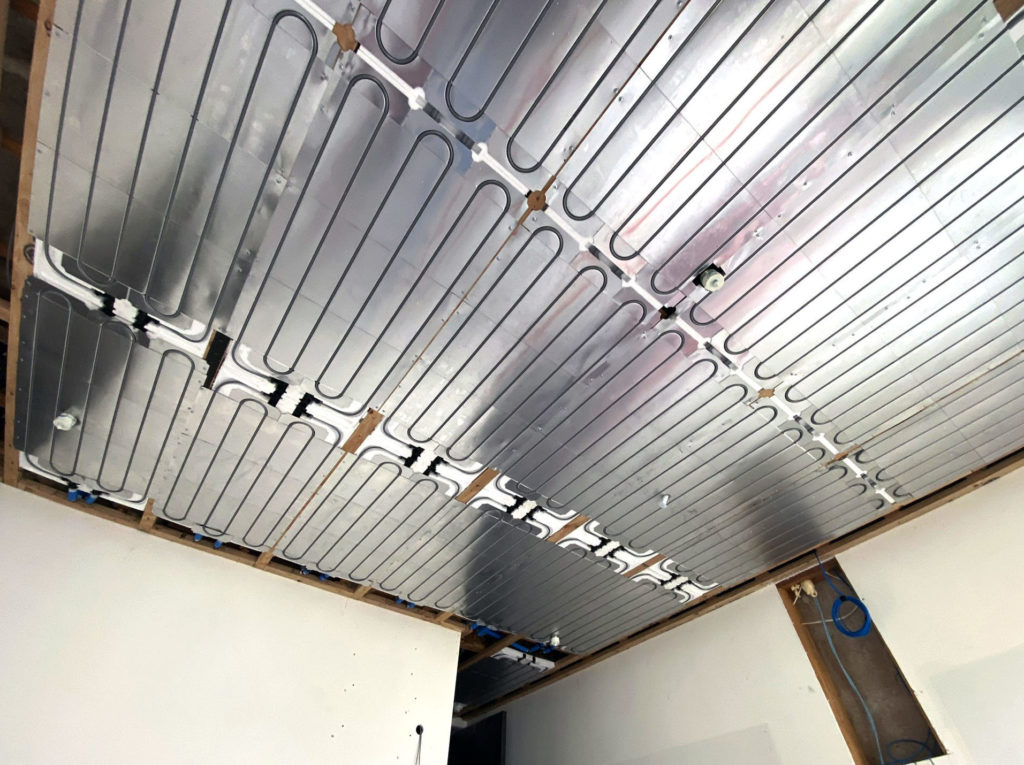
For almost three decades, Messana Hydronic Technologies has been at the forefront of radiant ceiling panel technology. Messana has consistently innovated to streamline installations and enhance performance, ultimately simplifying construction and driving the evolution of ceiling-based radiant heating and cooling systems.
Ray Magic® NK panels are high-performance, hydronic radiant panels designed for ceiling installation. They can be covered with drywall, wood, or other ceiling materials, creating an unobstructed radiant surface.
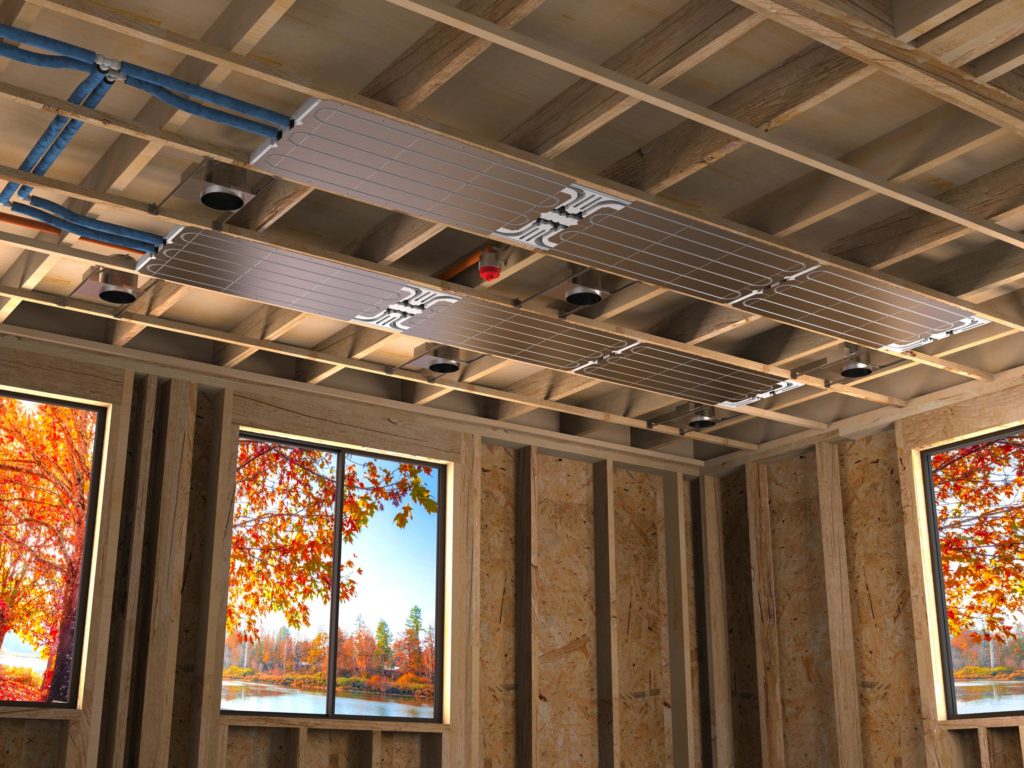
Ray Magic® NK panels are installed 24″ O.C. between wood or metal furring channels or ceiling joists.
Once the pre-cut EPS edge is removed from a ceiling panel, it can be stapled, nailed, or screwed to the ceiling joists or furring channels. Our patented fittings then facilitate the connection of piping/other panels.
Ceiling System Alternatives:
Capillary Tube System:
A capillary tube mat is a hydronic terminal that provides radiant heating and cooling. It consists of a network of small-diameter capillary tubes typically made of materials like plastic or rubber.
Although these systems are relatively popular in Europe, they have several drawbacks such as a slower response time and more complex installation process compared to Ray Magic® NK panels.
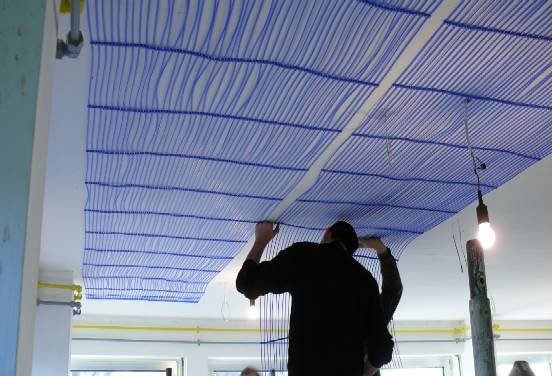
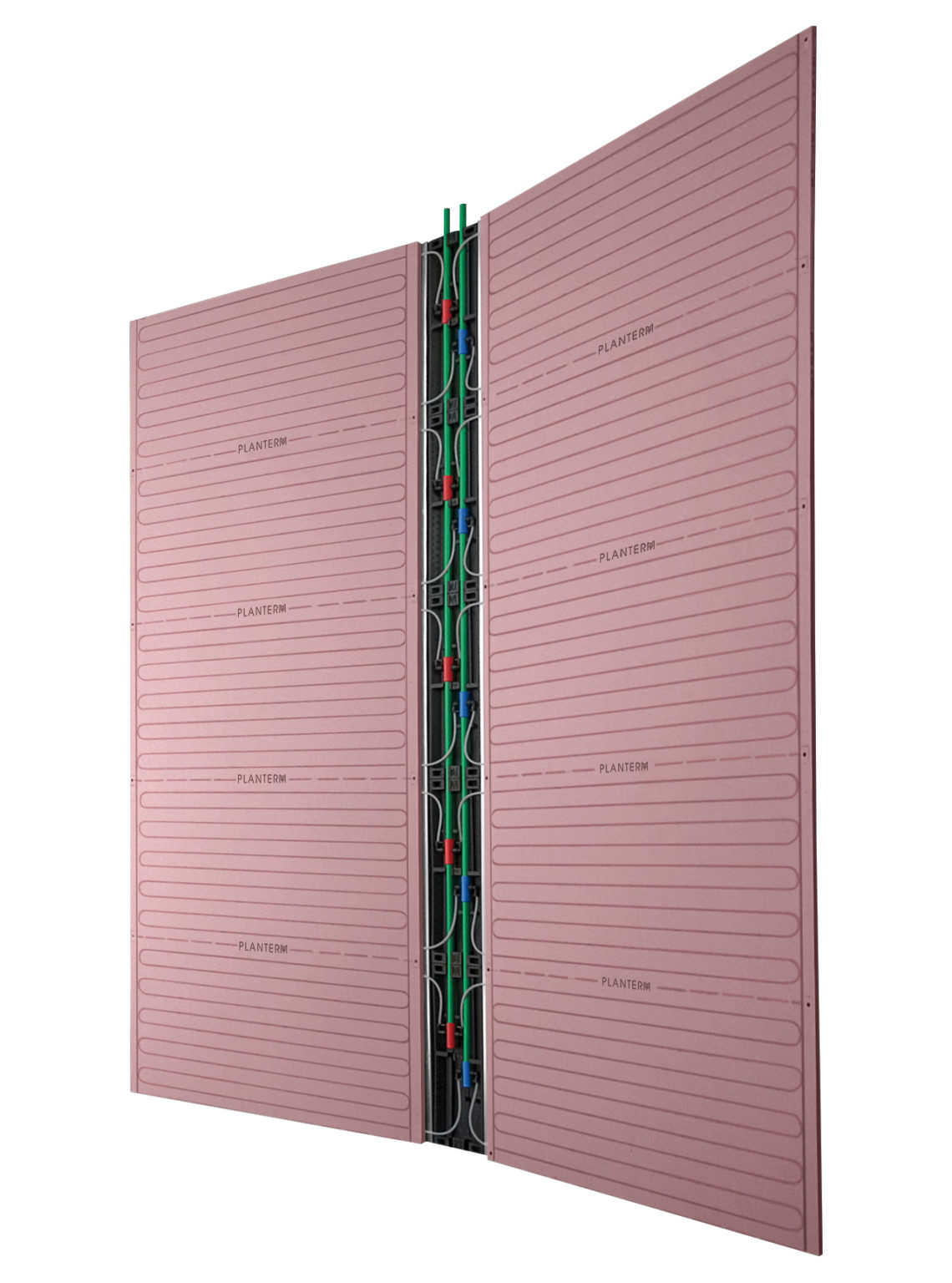
Routed Gypsum System:
Another popular option is a routed gypsum radiant panel system. These panels are typically crafted from a routed gypsum board with embedded piping externally connected to headers. This is the basis on which we developed our first radiant ceiling panel in 1998.
Messana would continue to iterate on this design until 2021 when we introduced our Ray Magic® NK panel. The most notable change was the removal of the gypsum board, which simplified and streamlined system installation.
Who Can Help Me Design My Hydronic HVAC System?
After 10 years designing some of the most complex HVAC systems in the United States, Messana can offer expert insights for any HVAC system.
We’ll work with your architects, engineers, and installers to simplify system design and installation. For more information regarding our design capabilities, click here.